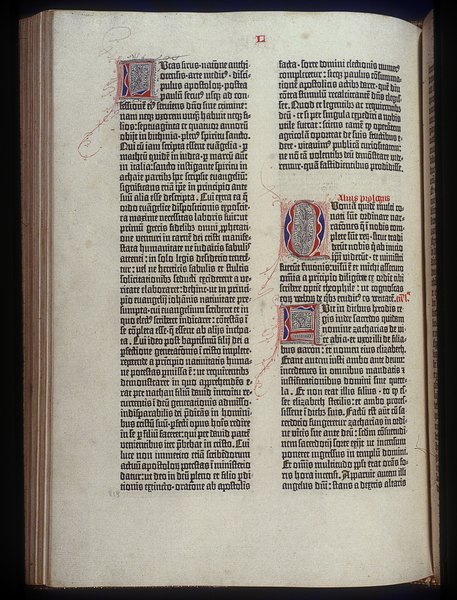By Angela Montefinise
Interview Conducted by Gayle Snible
The New York Public Library
Every year on Aug. 24, a spotlight is shone on the famous, world-changing Gutenberg Bible.
Email inboxes and websites repeatedly flash the seemingly credible information that on this date in 1456, the Bible was completed, marking the first book ever made with movable type.
So when the book that revolutionized printing and ushered the sharing of knowledge into a new era allegedly had its 554th anniversary last week, one would think the New York Public Library would have celebrated.
After all, NYPL counts a Gutenberg Bible as one of its rarest treasures, a historical artifact so great and important to the publishing and literary worlds that it is kept carefully on display in the Rose Main Reading Room of the landmark Stephen A. Schwarzman Building on 42 Street at all times.
Not so.
That's because, well, Aug. 24 is probably not really the Bible's anniversary.
Michael Inman, the NYPL's curator for rare books, said he has "no idea" where that date comes from, and said, "The closest thing most scholars can agree on is that the printing was completed at some point in 1455, that he was working on it for several years, and that there were approximately 180 copies of the book printed."

He added that "of the few books which Gutenberg may have had a hand in printing, only the Catholicon of 1460 is dated."
The earliest printed book in general that's dated is the Mainz Psalter, which was printed in 1457, according to Inman.
But regardless of when the book was actually printed, one thing is for sure - the Gutenberg Bible deserves to be honored and remembered. The book became "the cornerstone of printing in the west," said Inman.
"The mass printing of identical texts, which hadn't really been possible before Gutenberg, greatly facilitated the spread of knowledge," Inman said. "Over a period of several hundred years, language - spelling and grammar - was gradually codified. Literacy rates went up. More and more people were reading the same texts and discussing or debating the same ideas. This improvement in communication was one of the most important outcomes of printing."
And that is exactly why NYPL keeps the Bible on display all the time.
"NYPL is very much about the democratization of knowledge," Inman said. "The Bible epitomizes that ideal, which is to spread the power of learning, to empower people to learn."
The Gutenberg Bible is part of NYPL's Treasures Collection.
Image: Biblia Latina. [Mainz: Johann Gutenberg, ca. 1455].
The New York Public Library, Rare Book Division, from the Lenox Library.